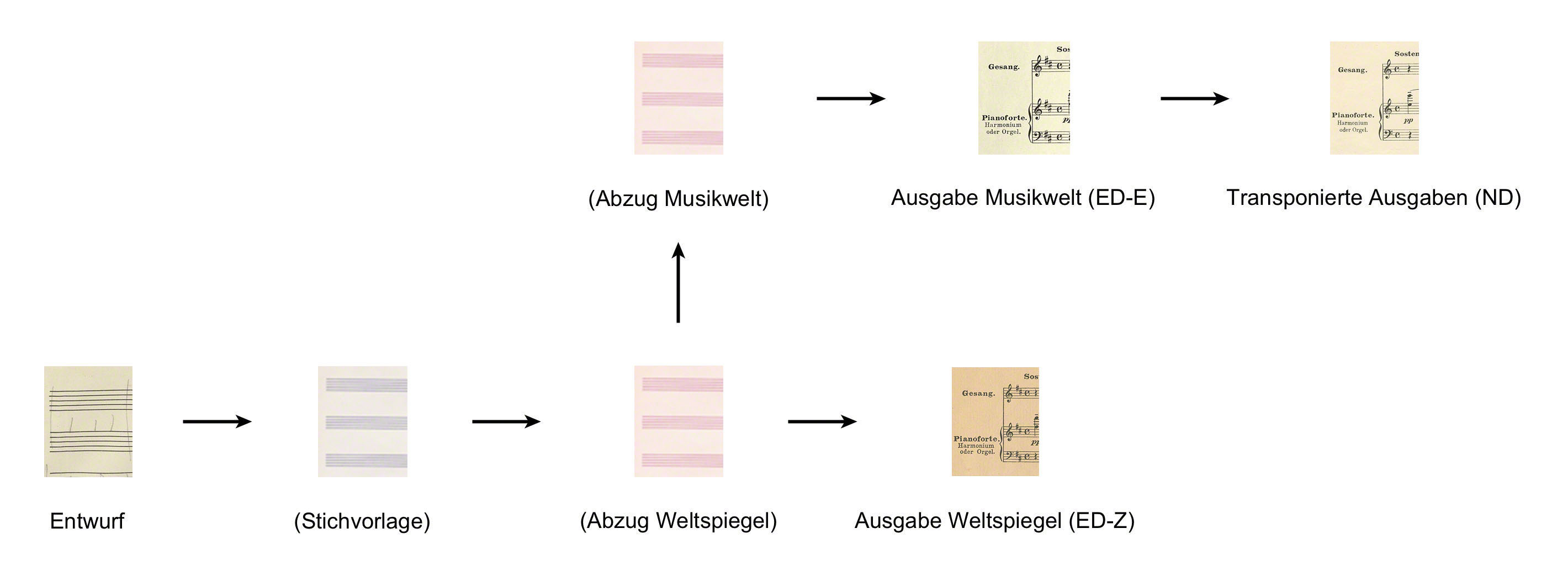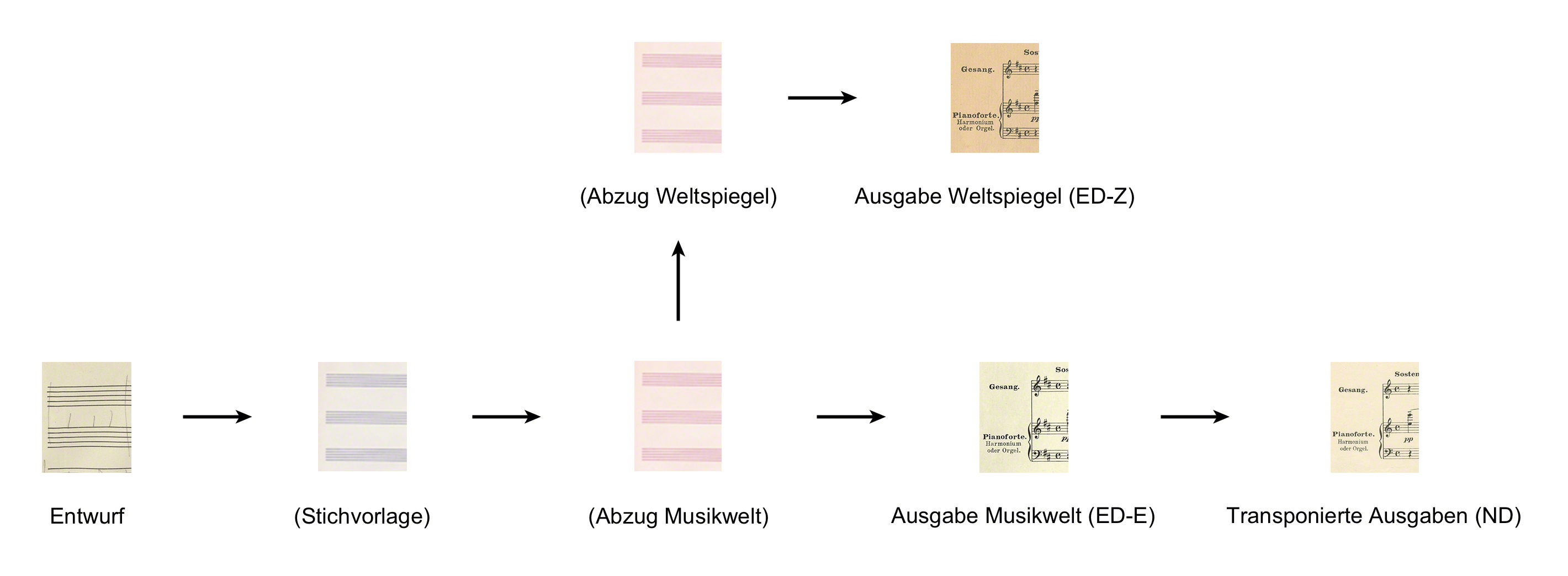Ehre sei Gott in der Höhe! WoO VII/37
Christmas Song for voice and piano, reed organ or organ
-
Text: Ludwig Hamann
- -
- -
- -
1.
| Reger-Werkausgabe |
Bd. II/7: Vokalwerke mit Orgelbegleitung und weiteren Instrumenten, S. 54–58. Bd. II/4: Lieder IV, S. 164–168. |
| Herausgeber |
Bd. II/7: Alexander Becker, Christopher Grafschmidt, Stefan König. Bd. II/4: Knud Breyer und Stefan König. |
| Verlag |
Carus-Verlag, Stuttgart. Bd. II/7: Verlagsnummer: CV 52.814. Bd. II/4: Verlagsnummer: CV 52.811. |
| Erscheinungsdatum |
Bd. II/7: Juni 2019. Bd. II/4: September 2023. |
| Notensatz | Carus-Verlag, Stuttgart. |
| Copyright |
Bd. II/7: 2019 by Carus-Verlag, Stuttgart and Max-Reger-Institut, Karlsruhe – CV 52.814. Bd. II/4: 2023 by Carus-Verlag, Stuttgart and Max-Reger-Institut, Karlsruhe – CV 52.811. Vervielfältigungen jeglicher Art sind gesetzlich verboten. Alle Rechte vorbehalten. |
| ISMN |
Bd. II/7: M-007-18850-4. Bd. II/4: M-007-30202-3. |
| ISBN |
Bd. II/7: 978-3-89948-318-5. Bd. II/4: 978-3-89948-447-2. |
unknown
Note: Der Buchhändler, Journalist und Schriftsteller Ludwig Hamann (1867–1929) schrieb das Gedicht, in das dreimal die Worte “Ehre sei Gott in der Höhe, Friede auf Erden und den Menschen ein Wohlgefallen” (Lukas 2,14) eingebettet sind, wohl eigens für Regers Vertonung. (In Hamanns unter dem Pseudonym “L. H. Spielmann” 1895 in Leipzig in zweiter Auflage publizierten Liedersammlung In Laune und Stimmung findet sich das Gedicht nicht.) Dieser könnte von ihm eine Abschrift zugesandt bekommen haben, die sich nicht erhalten hat.
1. Composition and Publication
The song Ehre sei Gott in der Höhe! (“Glory be to God on high”), in which the chorale »Vom Himmel hoch, da komm ich her« is woven into the instrumental part as a cantus firmus, provides for either harmonium or organ as alternative accompanying instruments, 1 though it was actually conceived for voice with piano, as is evident from the keyboard range of the accompaniment.2 It was published at Christmas 1905 both in the Welt-Spiegel (the “illustrated bi- weekly chronicle” of the Berliner Tageblatt) and in the Verlag der Musikwelt, whose editor, the writer and journalist Ludwig Hamann, was also the author of the song’s text.
Reger had already worked with Hamann before this. Between October 1901 und March 1903, Reger had published a total of 15 pieces as supplements to the journal Die Musik-Woche, which was edited by Hamann;3 and in July 1905, Reger had also contributed a Gigue in d minor for piano WoO III/12 no. 9 to that journal’s successor, Die Musikwelt. On 5 July and 9 November 1905, Reger sent two registered letters to Hamann whose content remains unknown, but might have had something to do with the process of publishing Ehre sei Gott in der Höhe!.4 However, when Lauterbach & Kuhn and Reger engaged in legal disputes in 1907 and the former’s lawyer, Rudolf Mothes, was charged with listing Reger’s breaches of contract, he assumed that this Christmas song had been composed “to a commission from the company of Rudolf Mosse [...] for the ‘Berliner Tageblatt’” (Letter from Mothes to the publisher Lauterbach & Kuhn of 5 October 1907). Reger did indeed have contact with the Tageblatt’s music editor Leopold Schmidt, who had lobbied for him with Simrock back in 1904.. But ultimately, it remains unclear who gave Reger the idea for writing WoO VII/37. Nor do we know if the two editors (Schmidt and Hamann) were in contact with one another.
These two editions were printed separately (and probably also independently of each other), though the copy in the Welt-Spiegel turned out to have rather more mistakes (see the Critical Report). After ca 1906, when the Musikwelt ceased to be, the version of the song printed there was distributed by the publishing house of H. Oppenheimer in Hamelin.
2.
Translation by Chris Walton.
1. Reception
At present, there are no records of performances in Reger's time.
1. Stemma

oder:

2. Quellenbewertung
Die Drucke im Welt-Spiegel und in der Musikwelt sind etwa zeitgleich erschienen. Über den Ablauf der Drucklegungsprozesse ist in Ermangelung handschriftlicher Quellen nichts zu sagen. Möglich wäre, dass die Stichvorlage von einem zum anderen Verlag weitergegeben wurde. Aufgrund der großen Ähnlichkeiten im Layout beider Ausgaben ist aber anzunehmen, dass die Drucklegungsprozesse enger miteinander in Beziehung standen: Vermutlich diente ein Abzug der einen Ausgabe als Vorlage der anderen – ohne dass hierin eine Reihenfolge auszumachen wäre.1
Die Beigabe des Welt-Spiegel weist eine Reihe offenkundiger Stecherfehler auf. Dagegen ging der im Verlag der Musikwelt erschienenen Einzelausgabe ein offenbar sorgfältigeres Lektorat voran. Deshalb liegt diese Ausgabe der Edition als Leitquelle zugrunde. Mit Ludwig Hamann, dem Herausgeber der Musikwelt und Dichter des Liedes, stand Reger in Verbindung. Er könnte an Korrekturen somit beteiligt gewesen sein.
Aufschlussreich sind die Revisionen des Notentexts (vgl. insbesondere T. 41, 34, 44, 47 und 70), die im Zuge der bei H. Oppenheimer erschienenen transponierten Ausgaben vorgenommen wurden. Da jedoch nicht dokumentiert ist, ob diese auf Reger zurückzuführen sind (siehe Bemerkungen zur Transposition), konnten diese im Notentext der RWA nicht als quellengestützt berücksichtigt werden. Sie sind jedoch in das Lesartenverzeichnis aufgenommen.
Keine Rolle für die Edition spielte der Entwurf, der insbesondere die Gesangsstimme in einer frühen Form überliefert.
3. Sources
- Entwurf
- Stichvorlage
- Erstdrucke
- Transponierte Ausgabe
Object reference
Max Reger: Ehre sei Gott in der Höhe! WoO VII/37, in: Reger-Werkausgabe, www.reger-werkausgabe.de/mri_work_00243.html, version 3.1.2, 14th March 2025.
Information
This is an object entry from the RWA encyclopaedia. Links and references to other objects within the encyclopaedia are currently not all active. These will be successively activated.